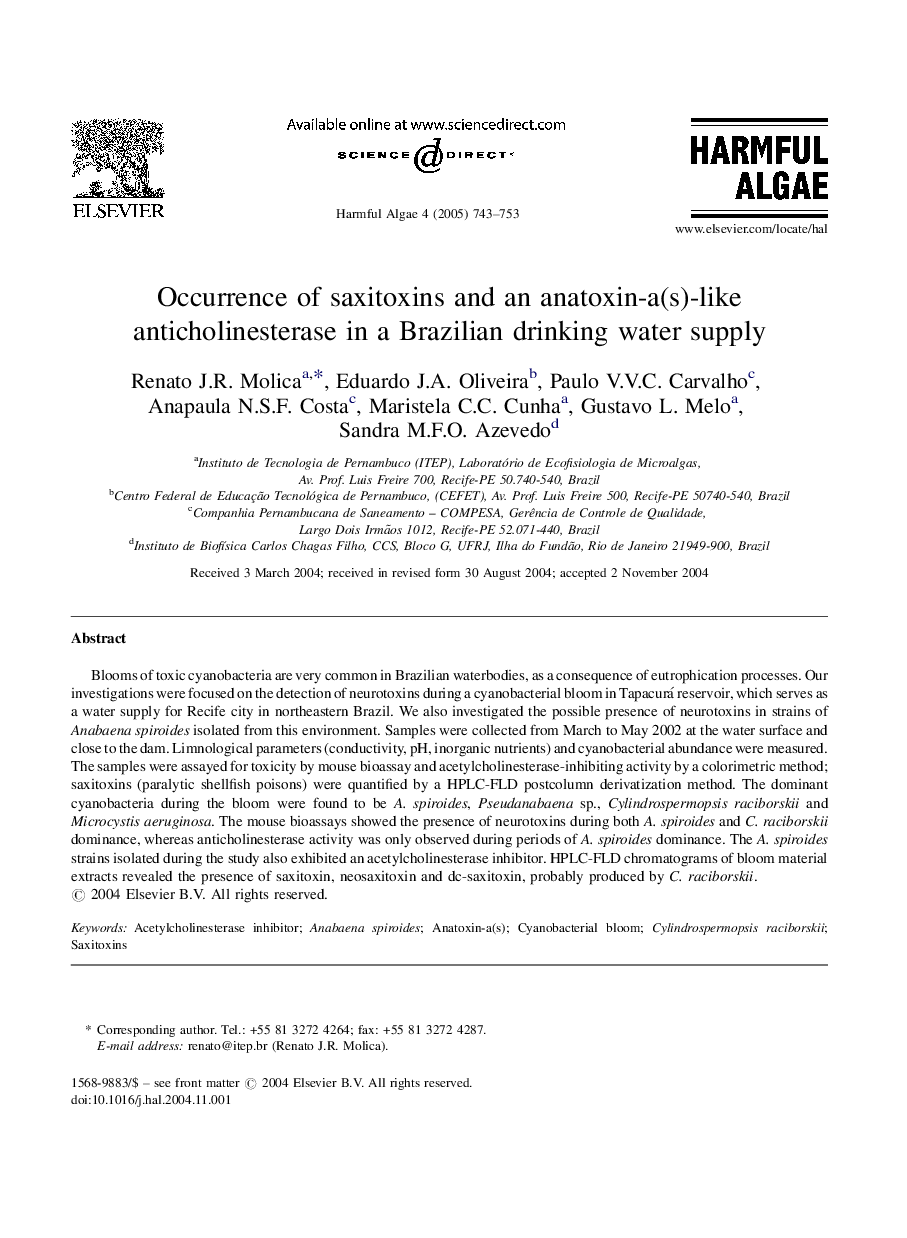| Article ID | Journal | Published Year | Pages | File Type |
|---|---|---|---|---|
| 9482610 | Harmful Algae | 2005 | 11 Pages |
Abstract
Blooms of toxic cyanobacteria are very common in Brazilian waterbodies, as a consequence of eutrophication processes. Our investigations were focused on the detection of neurotoxins during a cyanobacterial bloom in Tapacurá reservoir, which serves as a water supply for Recife city in northeastern Brazil. We also investigated the possible presence of neurotoxins in strains of Anabaena spiroides isolated from this environment. Samples were collected from March to May 2002 at the water surface and close to the dam. Limnological parameters (conductivity, pH, inorganic nutrients) and cyanobacterial abundance were measured. The samples were assayed for toxicity by mouse bioassay and acetylcholinesterase-inhibiting activity by a colorimetric method; saxitoxins (paralytic shellfish poisons) were quantified by a HPLC-FLD postcolumn derivatization method. The dominant cyanobacteria during the bloom were found to be A. spiroides, Pseudanabaena sp., Cylindrospermopsis raciborskii and Microcystis aeruginosa. The mouse bioassays showed the presence of neurotoxins during both A. spiroides and C. raciborskii dominance, whereas anticholinesterase activity was only observed during periods of A. spiroides dominance. The A. spiroides strains isolated during the study also exhibited an acetylcholinesterase inhibitor. HPLC-FLD chromatograms of bloom material extracts revealed the presence of saxitoxin, neosaxitoxin and dc-saxitoxin, probably produced by C. raciborskii.
Keywords
Related Topics
Life Sciences
Agricultural and Biological Sciences
Aquatic Science
Authors
Renato J.R. Molica, Eduardo J.A. Oliveira, Paulo V.V.C. Carvalho, Anapaula N.S.F. Costa, Maristela C.C. Cunha, Gustavo L. Melo, Sandra M.F.O. Azevedo,
